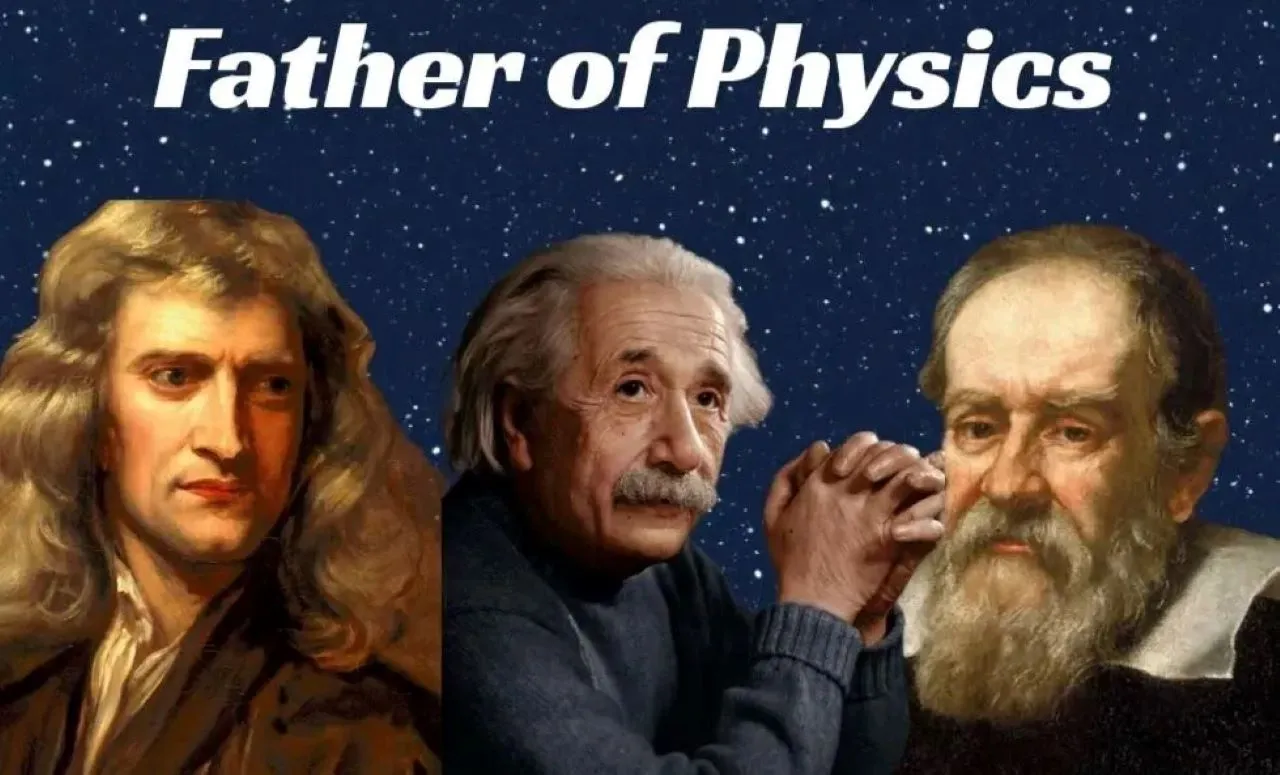Who Is Often Called The Father Of Physical Science?
Understanding the key figures who pioneered modern physical science provides critical insight into how foundational scientific ideas and practices came about. If you’re short on time, here’s a quick answer to your question: Sir Isaac Newton is most frequently regarded as the father of physical science for his revolutionary laws of motion and gravity which transformed physics and laid the groundwork for modern science.
In this in-depth article, we will explore why Sir Isaac Newton is so often bestowed the title of father of physical science. We will examine his background and some of his most important scientific contributions that helped revolutionize concepts of physics and mathematics.
We will also look at the influence of his work on Enlightenment philosophy and discuss how his approaches represented a major turning point in the evolution of modern science itself.
Brief Background on Newton’s Life and Times
Overview of Key Biographical Details
Sir Isaac Newton, often called the father of physical science, was a renowned English mathematician, physicist, and astronomer. He was born on January 4, 1643, in Woolsthorpe, Lincolnshire, England, and died on March 31, 1727, in Kensington, London.
Newton’s early life was marked by personal struggles, including the death of his father before his birth and the subsequent remarriage of his mother. Despite these challenges, he displayed exceptional intellectual abilities from a young age, and his passion for learning propelled him to great heights.
Newton’s formal education began at The King’s School in Grantham, where he excelled in mathematics. In 1661, he enrolled at Trinity College, Cambridge, where he studied mathematics and physics. It was during his time at Cambridge that Newton made groundbreaking discoveries in various fields of science, including optics, calculus, and the laws of motion.
The Scientific Revolution and Enlightenment
Newton’s work was conducted during a period known as the Scientific Revolution, which spanned roughly from the mid-16th century to the late 18th century. This era marked a significant shift in scientific thinking, as scholars began to challenge traditional beliefs and rely more on empirical evidence and experimentation.
It was a time of great curiosity and intellectual exploration, with scientists and philosophers seeking to understand the natural world through observation and reason.
The Enlightenment, a philosophical movement that overlapped with the Scientific Revolution, further emphasized the importance of reason, logic, and evidence-based thinking. Scholars during this period sought to apply scientific principles to various aspects of society, including politics, economics, and social structures.
Newton’s contributions to physics and mathematics played a crucial role in shaping the scientific thinking of the time. His laws of motion and universal gravitation provided a framework for understanding the mechanics of the physical world.
His work on optics laid the foundation for the study of light and led to significant advancements in the field. Through his discoveries, Newton not only revolutionized scientific thought but also helped pave the way for the technological advancements of the Industrial Revolution.
To learn more about Sir Isaac Newton and his contributions to physical science, you can visit Encyclopedia Britannica, an authoritative source on the subject.
Newton’s Laws of Motion
Isaac Newton, often referred to as the father of physical science, revolutionized the field of physics with his groundbreaking work on the laws of motion. These laws, known as Newton’s Laws of Motion, laid the foundation for understanding the behavior of objects in motion and are still widely used today.
Challenging Prior Notions of Physics
Before Newton’s time, the prevailing view of motion was based on the ideas put forth by Aristotle. According to Aristotle’s physics, objects would only move if a force was continuously applied to them. However, Newton’s laws challenged this notion by introducing the concept of inertia.
In his first law of motion, also known as the law of inertia, Newton stated that an object at rest will remain at rest, and an object in motion will continue moving in a straight line at a constant speed, unless acted upon by an external force.
This idea revolutionized the understanding of motion, as it showed that objects would continue moving without the need for a continuous force.
Fundamental Principles of Mechanics
Newton’s second and third laws of motion expanded upon the concept of force and its effects on objects. The second law, often summarized as F = ma (force equals mass times acceleration), quantified the relationship between force, mass, and acceleration.
This law provided a mathematical framework for understanding the effects of forces on objects and is still used extensively in engineering and physics calculations today.
Newton’s third law of motion, often stated as “for every action, there is an equal and opposite reaction,” introduced the concept that forces always occur in pairs. This law explains why objects push or pull on each other when interacting, and it has important implications in fields such as engineering and rocket science.
Applications to Astronomy and Engineering
Newton’s laws of motion have far-reaching applications in various fields, including astronomy and engineering. In astronomy, these laws are used to predict the motion of celestial bodies, such as planets and comets.
They allow scientists to calculate the trajectories of space probes and satellites, making space exploration possible.
In engineering, Newton’s laws of motion are applied in the design and construction of structures, machines, and vehicles. Engineers use these laws to analyze and optimize the performance of bridges, buildings, cars, and airplanes, ensuring their stability and safety.
Law of Universal Gravitation
Isaac Newton is often called the Father of Physical Science, and one of his most significant contributions to the field was the formulation of the Law of Universal Gravitation. This revolutionary concept completely overturned old concepts of gravity and profoundly influenced our understanding of the cosmos.
Overturning Old Concepts of Gravity
Before Newton’s groundbreaking work, the prevailing view of gravity was based on Aristotle’s theory that objects were naturally drawn to their “natural place” in the universe. However, Newton’s Law of Universal Gravitation challenged this notion by proposing that every object in the universe attracts every other object with a force that is directly proportional to their masses and inversely proportional to the square of the distance between them.
This insight fundamentally changed our understanding of how objects interacted with each other.
By introducing the concept of gravitational force as a universal phenomenon, Newton’s law provided a comprehensive explanation for not only the motion of objects on Earth but also the motion of celestial bodies in the heavens.
It laid the foundation for the study of celestial mechanics and paved the way for significant advancements in astronomy.
Revolutionary Insights on Celestial Mechanics
Newton’s Law of Universal Gravitation revolutionized our understanding of celestial mechanics by explaining the motion of planets, moons, and other celestial bodies. By applying his law, scientists could calculate the gravitational forces acting between celestial objects and accurately predict their motions.
This breakthrough allowed astronomers to explain phenomena such as the orbits of planets, the tides, and the behavior of comets.
One of the most remarkable applications of Newton’s law was the prediction of the existence and location of previously unknown celestial bodies. For example, the planet Neptune was discovered in 1846 based on irregularities observed in the orbit of Uranus.
This discovery confirmed the accuracy of Newton’s law and further solidified his status as a scientific pioneer.
Influence on Understanding the Cosmos
Newton’s Law of Universal Gravitation had a profound impact on our understanding of the cosmos as a whole. By providing a mathematical framework to describe the motions of celestial bodies, it allowed scientists to develop theories and models that explained the formation of galaxies, the behavior of black holes, and the structure of the universe itself.
Furthermore, Newton’s law laid the groundwork for later advancements in physics, including Albert Einstein’s theory of general relativity. Einstein built upon Newton’s ideas and developed a more comprehensive theory of gravity that accounted for the curvature of spacetime.
This theory expanded our understanding of gravity even further and led to groundbreaking discoveries in cosmology.
Development of Calculus
Innovations in Mathematics
When discussing the development of calculus, it is impossible not to mention Sir Isaac Newton. Newton, often called the “Father of Physical Science,” was a brilliant mathematician who made significant contributions to the field.
One of Newton’s most important innovations was the development of calculus. He is credited with creating both differential calculus and integral calculus, which are fundamental branches of mathematics that deal with rates of change and accumulation, respectively.
These mathematical tools revolutionized the way scientists and mathematicians approached problems in physics, engineering, and other scientific disciplines.
Newton’s groundbreaking work in calculus laid the foundation for many of the scientific advancements we enjoy today. Without his contributions, our understanding of the physical world would be significantly limited.
Contributions to Optics and Light Research
In addition to his innovations in mathematics, Newton also made significant contributions to the field of optics and light research. He conducted experiments with prisms and discovered that white light is made up of a spectrum of different colors.
This breakthrough led to the development of the first color wheel and laid the groundwork for our understanding of light and color. Newton’s research in optics was instrumental in the development of modern optics and the study of light waves.
His discoveries and theories in this area were so significant that they are still taught in physics classrooms today. Newton’s work in optics helped to establish him as one of the most influential scientists in history.
Other Important Scientific Work
While Newton is primarily known for his contributions to calculus and optics, he made many other important scientific discoveries and advancements throughout his career.
For instance, he formulated the laws of motion, known as Newton’s Laws, which are foundational principles in classical physics. These laws describe the relationship between the motion of an object and the forces acting upon it.
Newton also conducted experiments in astronomy and made significant contributions to the field. His laws of motion and universal gravitation provided a mathematical framework for understanding the motion of celestial bodies, revolutionizing our understanding of the universe.
Newton’s Impact on the History of Science
When it comes to the father of physical science, one name stands out above the rest – Sir Isaac Newton. Newton’s contributions to the field of science have had a profound and lasting impact, shaping the way we understand the natural world today.
Transforming Natural Philosophy into Modern Physics
During the 17th century, the study of nature was referred to as natural philosophy. It was Newton who revolutionized this field by developing the laws of motion and universal gravitation. His groundbreaking work in physics laid the foundation for modern physics, transforming the way we view the physical world.
Newton’s laws of motion, which describe how objects move and interact with one another, are still used today and form the basis of classical mechanics.
Newton’s law of universal gravitation, which explains the force of attraction between objects, was a groundbreaking discovery that helped explain phenomena such as the motion of planets and the tides.
This law not only provided a mathematical framework for understanding gravity but also paved the way for future advancements in astronomy and astrophysics.
Establishing the Scientific Method
In addition to his contributions to physics, Newton also played a crucial role in establishing the scientific method. The scientific method is a systematic approach to conducting experiments and gathering evidence to test hypotheses.
Newton’s emphasis on empirical observation, experimentation, and mathematical analysis set a new standard for scientific inquiry.
Newton’s book, “Mathematical Principles of Natural Philosophy,” commonly known as the Principia, outlined his laws of motion and universal gravitation. It not only provided a comprehensive explanation of his theories but also demonstrated the importance of rigorous mathematical proof in scientific research.
This approach to scientific investigation laid the groundwork for future scientists to build upon and advance our understanding of the natural world.
Kickstarting the Enlightenment
Newton’s contributions to science went beyond his groundbreaking discoveries in physics and the establishment of the scientific method. His work also had a profound impact on the broader intellectual and cultural movement known as the Enlightenment.
The Enlightenment was a period of intellectual and philosophical growth that emphasized reason, logic, and scientific inquiry. Newton’s theories and methodologies became emblematic of the Enlightenment’s pursuit of knowledge and truth.
His emphasis on observation and experimentation directly challenged the prevailing dogmas and superstitions of the time, paving the way for a more rational and evidence-based approach to understanding the world.
Newton’s impact on the history of science cannot be overstated. His contributions to physics, the establishment of the scientific method, and his role in kickstarting the Enlightenment have shaped the way we view and understand the natural world.
Today, scientists and researchers continue to build upon Newton’s work, pushing the boundaries of knowledge and furthering our understanding of the universe.
Conclusion
Isaac Newton’s insights and approaches fundamentally transformed science from the medieval natural philosophies into the physics and mathematics we know today. His laws of motion created classical mechanics, while his law of gravity explained planetary motion and underpinned astronomy like never before.
Newton invented integral and differential calculus, further advanced optics, and helped kickstart the Enlightenment era of reason. His work established crucial notions of the scientific method that remain central to research practices.
For these immense contributions that created modern understandings of the physical world, Sir Isaac Newton is rightly considered the father of physical science.







